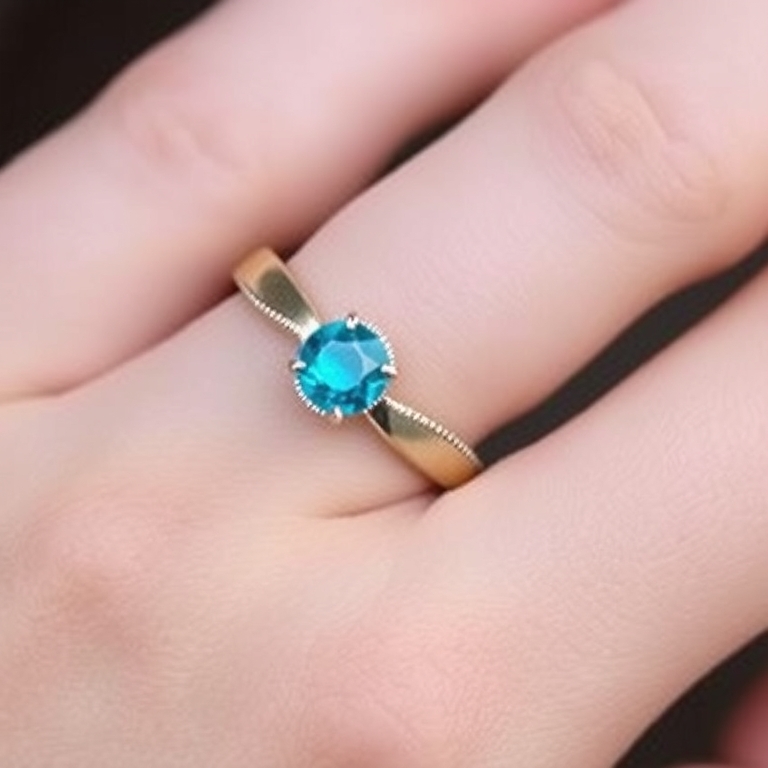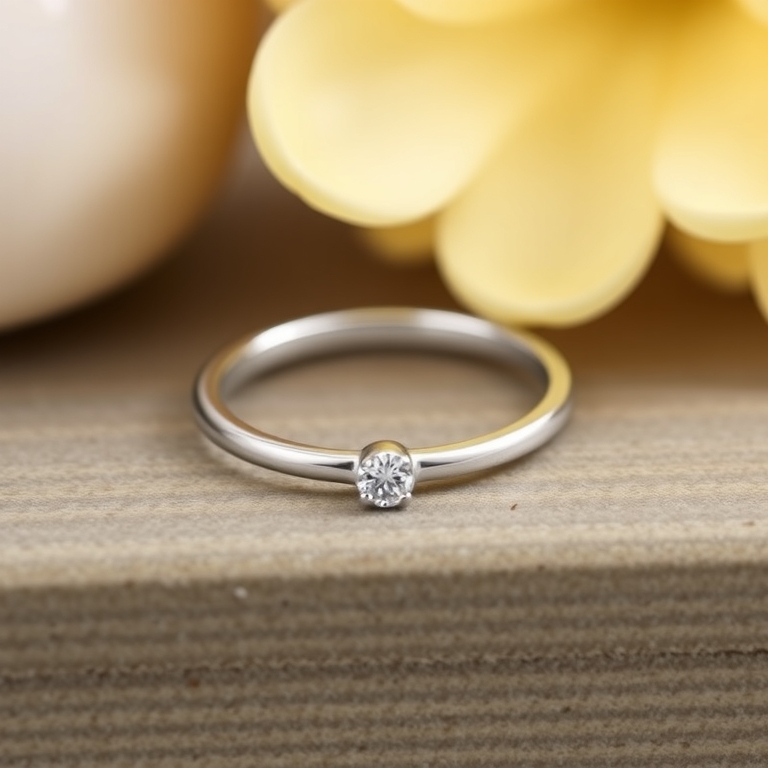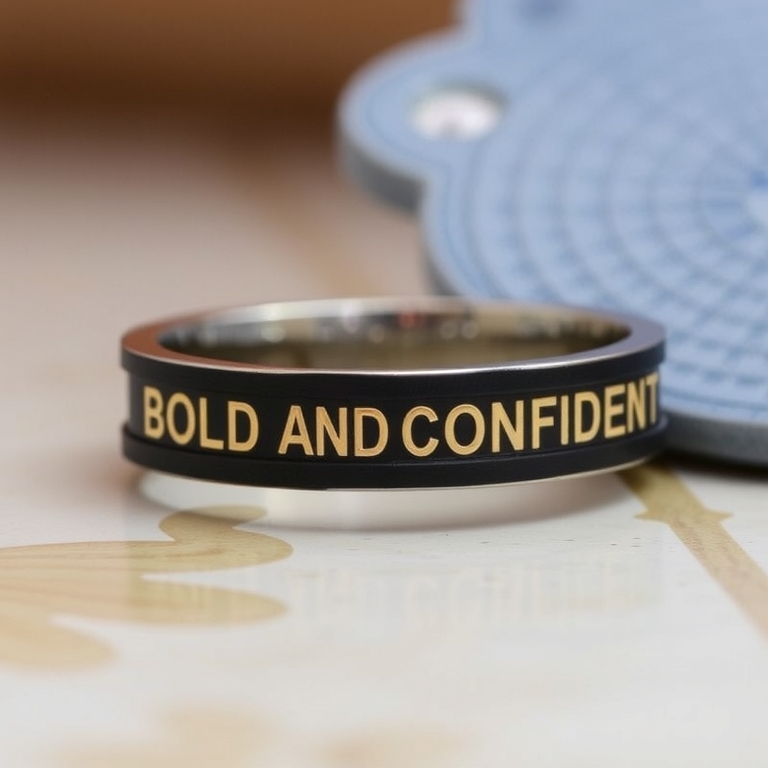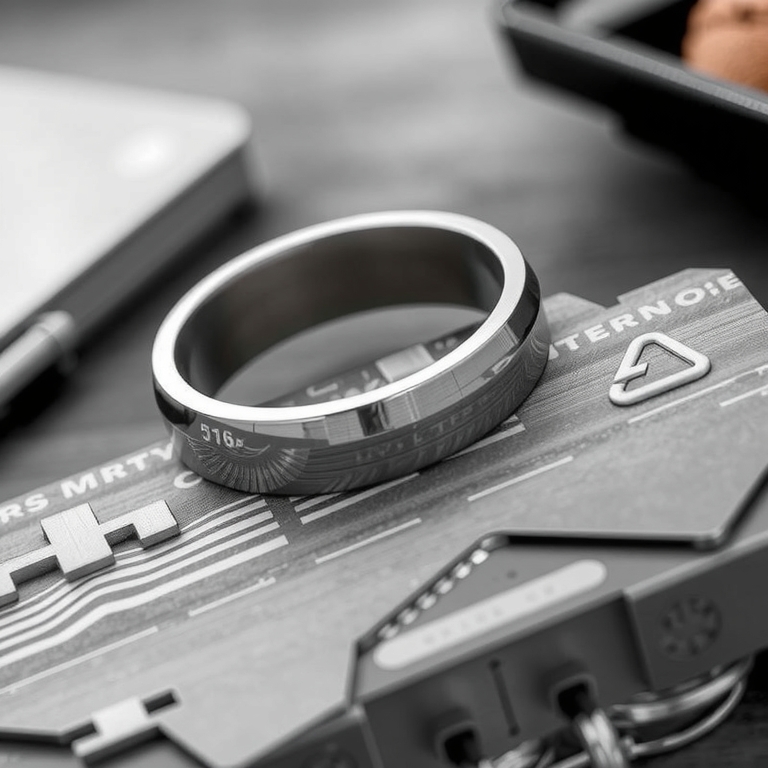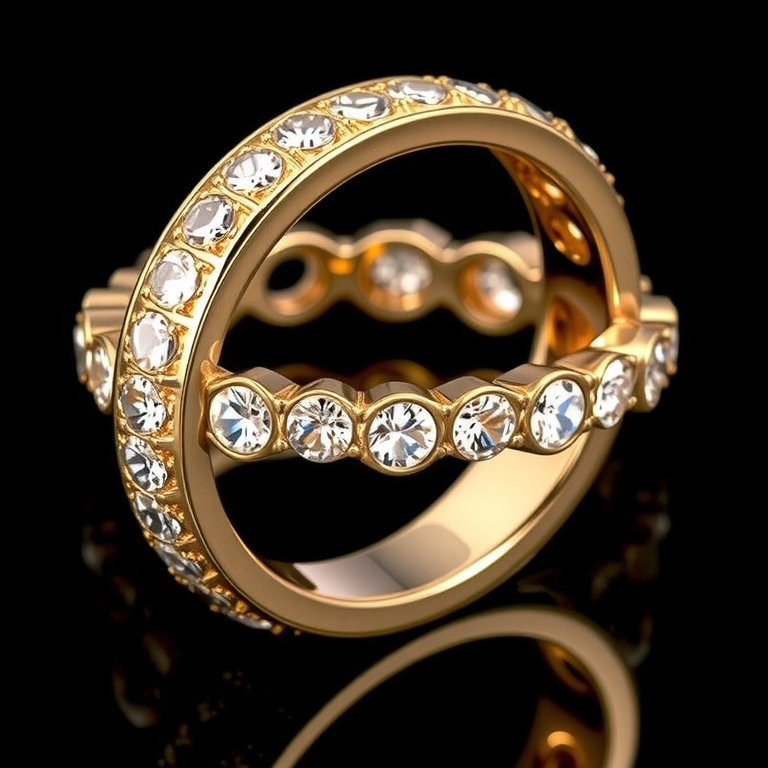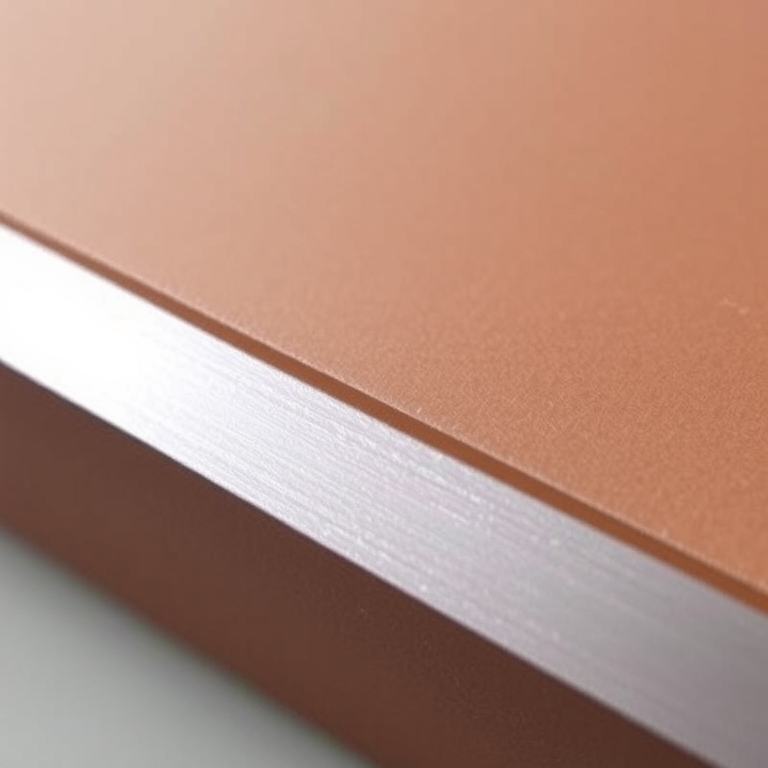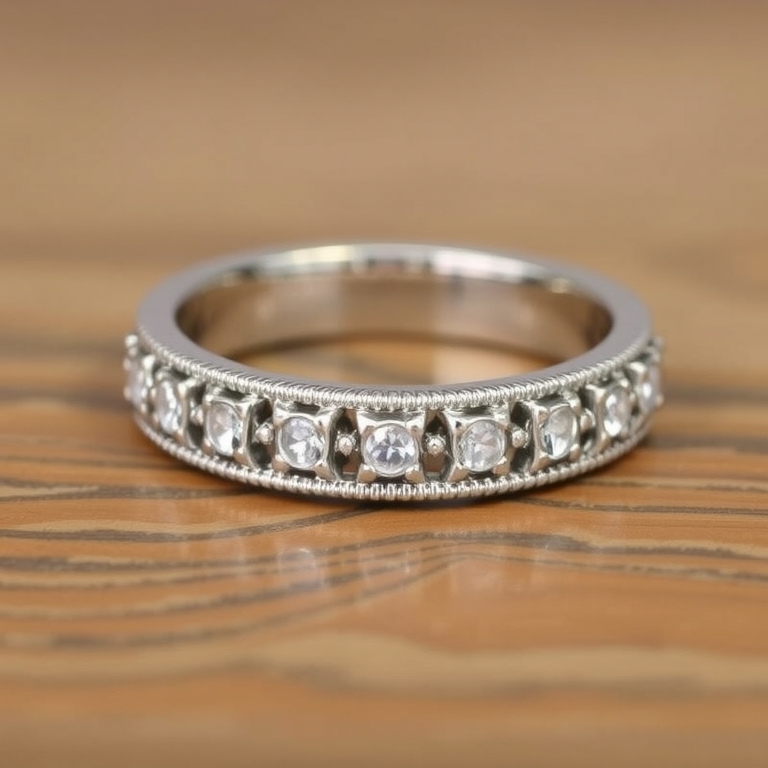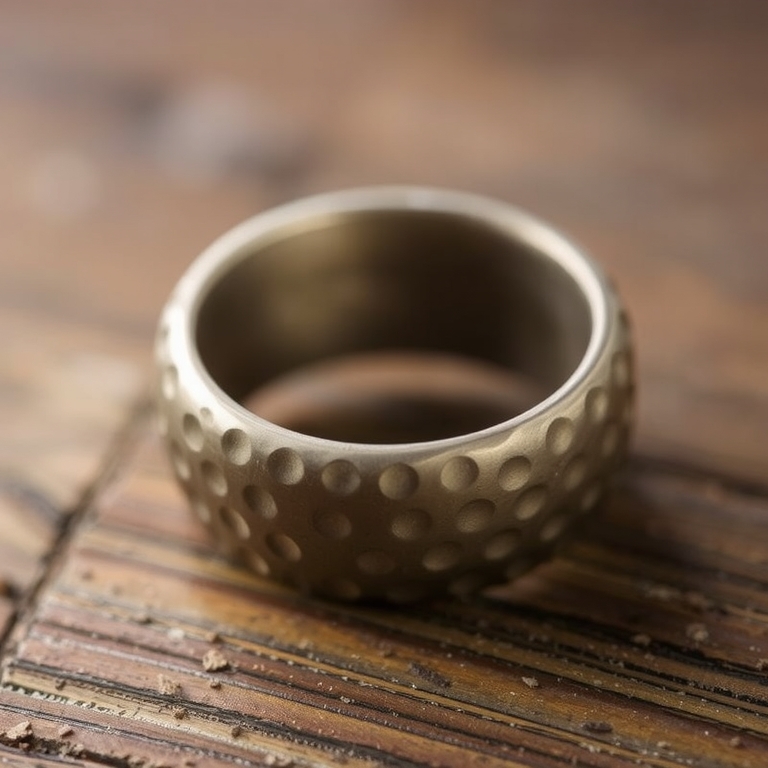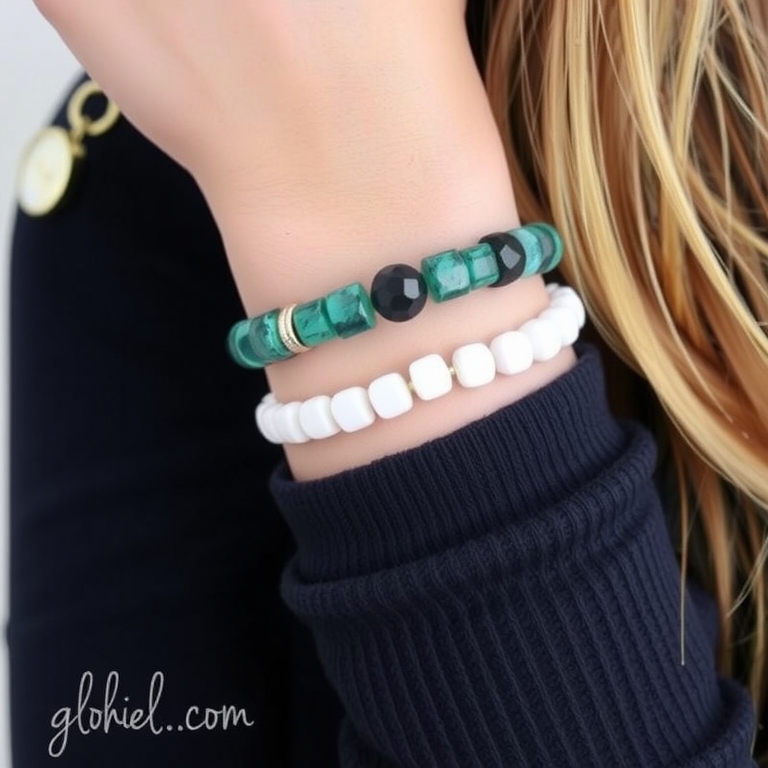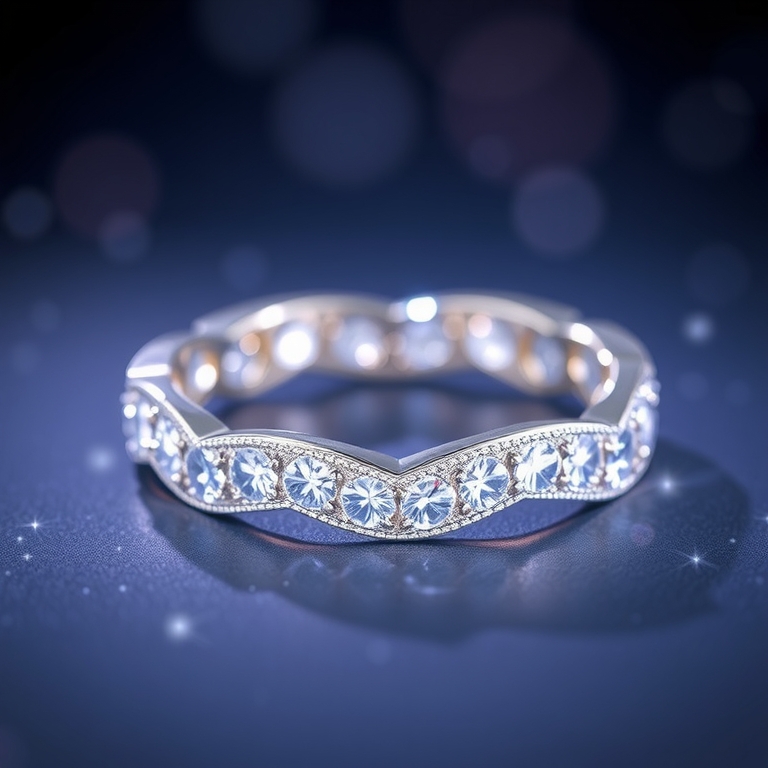Choosing the right ring band width is crucial for achieving the perfect look. It significantly impacts how your ring sits on your finger and complements your overall style. This comprehensive guide explores 13 unique band width options, providing insights and inspiration for your next ring purchase or design.
From delicate and dainty to bold and substantial, the possibilities are endless. Consider your personal style, lifestyle, and finger size when making your selection. This guide will empower you to make an informed decision, ensuring your ring becomes a cherished accessory for years to come.
-
The Classic 2mm Band: Delicate and Elegant

The Classic 2mm Band: Delicate and Elegant The classic 2mm band offers a timeless elegance, perfect for everyday wear and stacking. Its delicate width complements smaller gemstones beautifully, allowing the stone’s brilliance to shine. Consider a slightly domed profile for added comfort and a touch of subtle sophistication.
For a modern twist on the classic 2mm band, explore different metal choices. Yellow gold offers warmth, platinum exudes luxury, and rose gold adds a romantic touch. A simple, high-polish finish enhances the band’s inherent shimmer, while a matte finish creates a more understated look.
Adding subtle details can elevate the 2mm band beyond its minimalist design. A delicate milgrain edging adds vintage charm, while a textured surface injects a touch of modern personality. Consider incorporating small, ethically-sourced gemstones for a personalized touch.
Ultimately, the best choice depends on personal style and preference. Experiment with different metal colors and finishes to discover the perfect 2mm band that complements your unique aesthetic and enhances your everyday style. Remember, even subtle variations can create a distinctly individual piece.
-
The Popular 3mm Band: Versatile and Balanced

The Popular 3mm Band: Versatile and Balanced The classic 3mm band width offers a versatile and balanced look, suitable for everyday wear and special occasions. Its moderate width is flattering on most fingers and hand sizes, preventing the ring from appearing too dainty or overwhelming. Consider a 3mm band in a simple, polished metal for a timeless aesthetic, or add subtle detailing like a milgrain edge for a touch of elegance.
For a slightly bolder look while maintaining a comfortable fit, consider a 3.5mm band. This subtle increase in width adds a touch more presence without being excessively chunky. A 3.5mm band works well with both precious and semi-precious gemstones, offering a good balance between the stone and the band itself. Experiment with different metal colors, such as rose gold or platinum, to personalize the style.
If you prefer a more delicate look, a 2.5mm band provides a graceful and understated option. This narrower width is ideal for stacking rings or wearing multiple bands together. A 2.5mm band can be styled with a simple design or incorporated into a more elaborate ring setting, enhancing the overall elegance without overpowering the finger.
Ultimately, the best band width depends on personal preference and the overall style you’re aiming for. Experimenting with different widths and trying rings on can help you determine the most flattering and comfortable option. Don’t hesitate to seek professional guidance from a jeweler to find the perfect fit and aesthetic for your ring.
-
The Statement 4mm Band: Bold and Confident

The Statement 4mm Band: Bold and Confident A 4mm band width offers a striking balance between boldness and wearability. Its substantial presence makes a statement without overwhelming the hand. This width suits larger gemstones beautifully, providing a strong foundation while allowing the stone to take center stage. Consider a high-polish finish for a classic look, or opt for a subtle hammered texture for added dimension.
For a more delicate feel within the 4mm range, explore bands with slightly thinner profiles or less pronounced edges. Bezel-set stones can also create the illusion of a slightly smaller band. A slightly domed profile can enhance comfort while maintaining a significant presence. You can also choose different metals, with platinum offering a heavier feel than yellow gold, for example.
Variations in metal type significantly impact the perceived width. Platinum, being denser, will appear more substantial than yellow or white gold, even at the same measured width. A contrasting metal inlay can also add visual interest and create the appearance of a wider band. Consider incorporating milgrain detailing for an ornate touch within the 4mm frame.
Ultimately, the ideal 4mm band depends on personal preferences and the overall ring design. Experiment with different metal colors, finishes, and settings to find the perfect combination that complements your style and the chosen gemstone. Remember to try on several variations to assess comfort and visual impact before making a final decision.
-
The Modern 5mm Band: Substantial and Stylish

The Modern 5mm Band: Substantial and Stylish The 5mm band width offers a compelling balance between a noticeable presence and understated elegance. It’s substantial enough to feel luxurious on the finger, yet avoids overwhelming the hand. This width is incredibly versatile, suitable for various ring styles, from simple solitaire diamonds to intricate designs.
Consider a 5mm band in a classic metal like platinum or yellow gold for a timeless look. For a more modern feel, explore rose gold or white gold, or experiment with unique metals like palladium. Adding subtle details like milgrain edging or a hammered texture can elevate the design.
A 5mm band pairs beautifully with various center stones. Smaller stones benefit from the band’s presence, while larger stones are nicely complemented without being overshadowed. This width also works well with both round and princess-cut diamonds, as well as other gemstones.
For a unique twist, explore contrasting metal combinations within the 5mm width. A bi-metal band with yellow gold and white gold, for example, offers visual interest. Beveled edges also create a sleek, contemporary profile, offering a fresh take on the classic band.
-
The Luxurious 6mm Band: Opulent and Eye-Catching

The Luxurious 6mm Band: Opulent and Eye-Catching For a truly statement piece, consider a 6mm wide band. This width offers a substantial presence on the finger, perfect for showcasing larger center stones or intricate detailing. The bolder width commands attention, making it ideal for those who appreciate luxurious aesthetics.
A 6mm band works beautifully with various ring styles. Consider a classic solitaire setting for a timeless look, or opt for a halo setting to maximize sparkle. For a modern twist, pair it with a unique gemstone or a textured metal finish.
To personalize your 6mm band, explore different metal choices. Platinum offers a sleek, modern feel, while yellow gold exudes warmth and traditional elegance. Rose gold provides a romantic touch, and even consider two-tone combinations for a unique design.
Ultimately, the best metal for your 6mm band depends on your personal style and the overall aesthetic you desire for your ring. Consider your wardrobe and existing jewelry to ensure the band complements your existing collection and lifestyle. Remember to try on different metals and styles to find the perfect fit.
-
The Dramatic 7mm+ Band: A Showstopper

The Dramatic 7mm+ Band: A Showstopper For a truly statement piece, consider a 7mm or wider band. This substantial width commands attention and makes a bold fashion statement. Variations include a high-polish finish for classic elegance or a hammered texture for a more rustic feel.
A wider band provides ample surface area for intricate detailing. Consider incorporating milgrain edging, pave diamonds, or channel-set gemstones for added sparkle and visual interest. Simpler designs, like a single row of stones or a textured surface, can also be incredibly striking on a wider band.
The weight of a wider band adds to its luxurious feel. Choose a durable metal like platinum or 18k gold to ensure longevity. Keep in mind that a heavier ring might feel different on your finger than a thinner band, so try on various widths before making a decision.
Ultimately, the best width depends on personal preference and finger size. A 7mm+ band is perfect for those who want a visually impactful ring that makes a confident statement. Experiment with different profiles, such as flat, curved, or dome shapes, to discover the most comfortable and aesthetically pleasing option for you.
-
The Comfort Fit Band: Prioritizing Wearability

The Comfort Fit Band: Prioritizing Wearability A comfortable fit significantly impacts a ring’s aesthetic appeal. Discomfort draws attention away from the design. Opt for a slightly wider band (around 4-6mm) for a balance of comfort and visual impact; this width allows for intricate detailing without feeling bulky. Consider a gently rounded interior for extra ease of wear.
For a modern minimalist look, a thinner band (2-3mm) can be surprisingly comfortable and elegant, especially in solid metals. This works exceptionally well with simple designs or solitaire settings. A slightly domed profile adds subtle visual interest while maintaining comfort. Remember to account for finger size; a snug fit is key.
Wider bands (7mm and up) offer a bolder statement. They’re ideal for showcasing larger gemstones or intricate designs. However, ensure the metal is lightweight to avoid feeling heavy or cumbersome. Consider a comfort fit interior to mitigate potential discomfort associated with a wider band.
Experiment with different band profiles—flat, curved, or beveled—to find what suits your style and comfort level. A slightly curved or beveled edge can create a more graceful appearance and comfortable feel. Ultimately, the best width depends on personal preference, ring style, and gemstone size, so try on different options before committing.
-
The Beveled Edge Band: Adding Subtle Texture

The Beveled Edge Band: Adding Subtle Texture A beveled edge adds a subtle yet sophisticated touch to any ring band, enhancing its overall aesthetic without being overly flashy. The slight angle of the bevel creates a play of light and shadow, making the ring appear more dimensional and interesting. This technique works beautifully on both simple and intricate designs, adding a touch of understated elegance.
Consider the width of the bevel itself for different effects. A narrower bevel will offer a more delicate look, suitable for dainty rings and minimalist styles. A wider bevel, on the other hand, creates a bolder statement, ideal for chunkier rings or those with more prominent settings. Experiment with varying bevel widths to find the perfect balance.
The metal type can significantly influence the appearance of a beveled edge. A polished platinum or white gold bevel will offer a clean, modern look. Conversely, a brushed rose gold or yellow gold bevel provides a warmer, more rustic feel. The contrast between the beveled edge and the main band can also be a visually stunning element.
For an extra touch of personalization, incorporate milgrain detailing along the beveled edge. This delicate beading adds texture and visual interest, enhancing the subtle elegance of the bevel. This works well with most metals and styles, adding a hint of vintage charm without overwhelming the design. Remember that the choice of metal, finish, and any additional detailing can profoundly impact the overall aesthetic.
-
The Milgrain Band: Classic and Ornate Detail

The Milgrain Band: Classic and Ornate Detail The milgrain band offers a timeless appeal, adding delicate, ornate detail to any ring. This technique involves tiny beads of metal along the edge of the band, creating a visually rich texture. Consider a thin band for a delicate look, or a wider band for a bolder statement. The milgrain detail can be incorporated into various metals, from yellow gold to platinum.
For a modern twist, combine milgrain with a contrasting metal. A yellow gold band with platinum milgrain creates a striking juxtaposition, highlighting the intricate detailing. Alternately, consider a rose gold band with white gold milgrain for a softer, romantic feel. Experiment with different metal combinations to personalize your ring.
The width of the milgrain band is crucial to its overall impact. A thinner band (around 1.5-2mm) is perfect for a dainty, understated style, while a wider band (3-4mm or more) makes a more substantial and noticeable statement. You can also vary the size of the milgrain beads themselves to create different textures and levels of visual interest.
Finally, remember that the milgrain detail enhances the shape of the ring. Consider a slightly curved or domed band to further accentuate the milgrain’s beauty. It works beautifully on solitaire rings, and also complements intricate center stones. The possibilities for personalization are vast, making the milgrain band a truly versatile choice.
-
The Hammered Texture Band: A Modern Rustic Feel

The Hammered Texture Band: A Modern Rustic Feel A hammered texture ring band offers a unique blend of modern and rustic aesthetics. The uneven surface scatters light beautifully, adding depth and visual interest. This style works well in various metals, from sterling silver to rose gold, allowing for personalization.
Consider the degree of hammering for a customized look. A subtly hammered band offers a refined elegance, while a heavily hammered band creates a more pronounced, rustic feel. Pair it with a simple gemstone or leave it as a statement piece on its own.
For a variation, try a combination of hammered and polished textures. A partially hammered band with polished edges provides a contrast that adds sophistication. You can also experiment with different hammer patterns for a more personalized touch.
When choosing a hammered band, think about the overall style you’re aiming for. A delicate hammered band complements dainty settings, while a bolder hammered band suits larger stones or a more substantial design. Remember to consider the comfort and durability of the band’s texture.
-
The Two-Tone Band: Striking Contrast

The Two-Tone Band: Striking Contrast A two-tone ring band offers a visually striking contrast, enhancing the overall aesthetic. Consider pairing contrasting precious metals like yellow gold and white gold, or rose gold and platinum for a unique look. The width of each metal band can be adjusted to create different effects; a wider band of one metal can create a bold statement, while thinner bands offer a more subtle contrast.
For a modern twist, experiment with different finishes. A polished yellow gold band paired with a brushed white gold band introduces textural interest. Conversely, a matte rose gold band juxtaposed with a high-polish platinum band creates a sophisticated elegance. Remember that the contrast in both color and texture significantly impacts the ring’s appearance.
The two-tone concept isn’t limited to precious metals; consider incorporating other materials like diamonds or gemstones. A thin line of pave diamonds separating two metal bands adds sparkle and dimension. Alternatively, a wider band of one metal could incorporate a row of gemstones, providing a burst of color and visual interest.
When choosing widths, think about your personal style and the overall size of your ring. A wider band generally makes a bolder statement and can be more eye-catching. Thinner bands create a more delicate and refined look. Experiment with different combinations to find the perfect balance that reflects your unique taste.
-
The Stackable Band: Versatile Layering

The Stackable Band: Versatile Layering Stackable bands offer unparalleled versatility in enhancing ring aesthetics. Consider thin bands in varying metals like rose gold, yellow gold, and white gold for a playful, layered look. Mixing textures, such as a hammered band with a polished one, adds visual interest and depth. Remember to keep the overall look balanced and proportionate to your finger size.
For a bolder statement, explore wider stackable bands. A combination of a wider, textured band with a thinner, simpler band creates visual contrast and a modern feel. Experiment with different metal colors and finishes to find a harmonious combination that complements your style. You can even incorporate gemstones for extra sparkle and personality.
Delicate bands can add a touch of elegance and sophistication. A single thin band can subtly enhance a solitaire diamond or other statement ring. Alternatively, layer several thin bands together for a more substantial, yet still refined, look. This approach keeps the focus on the central ring while adding subtle visual richness.
When choosing stackable bands, consider the occasion and your personal style. A minimalist approach works well for everyday wear, while more elaborate combinations are perfect for special events. Remember to prioritize comfort; ensure the bands aren’t too tight or too loose. Proper sizing is crucial for a comfortable and visually appealing stack.
-
The Eternity Band: Continuous Sparkle

The Eternity Band: Continuous Sparkle Consider an eternity band with a thin profile (around 1.5-2mm) for a delicate, understated look. This subtle width complements solitaire diamonds or smaller center stones beautifully. A slightly wider version (2.5-3mm) provides a bolder statement while still maintaining elegance; this is ideal for those who prefer a more noticeable band but want to avoid overwhelming their center stone.
For a more substantial feel, opt for an eternity band between 3-4mm wide. This width offers considerable brilliance, especially with larger or multiple gemstones. Consider pave-set stones for maximum sparkle or channel-set gems for a cleaner, more minimalist appearance. Remember that the width of the band should complement your center stone’s size and the overall style of your ring.
If you prefer a unique touch, explore bezel-set eternity bands. The protective bezels add a touch of vintage charm and durability, protecting the stones while creating a bold, contemporary design. Experiment with mixed metal tones—like rose gold and yellow gold—for a visually striking effect. Different gemstone shapes (round, princess, baguette) can alter the appearance significantly.
Ultimately, the best width depends on your personal preferences and the design of your ring. Before committing, try on different widths to see how they feel and look on your finger. Consider the overall proportions of your hand and the setting of your ring; this will help you choose a band width that complements the entire piece perfectly.
Editor’s Recommendations
- Consider your lifestyle when choosing a band width – a delicate band might not be suitable for heavy manual labor.
- Prioritize comfort; even a stunning ring is less enjoyable if it’s uncomfortable to wear.
- Don’t be afraid to experiment – try on different widths to see what looks and feels best on your finger.
Conclusion
Selecting the perfect ring band width is a deeply personal choice, reflecting individual style and preferences. This guide provided a range of ideas, each with unique characteristics.
By considering factors such as finger size, desired style, and comfort, you can confidently choose a band width that enhances the beauty and functionality of your ring. Remember, the right choice is the one that feels best and expresses your unique personality.

